Little Miss Dysphoria0
An Essay about Transgender Women and Madness
by Leah Tigers
For Kate Millett.
I’m not offering you any solutions. From the start I have been speaking not to the educators but to the guilty.
~ Jean Genet, The Criminal Child
In 1973, the American Psychiatric Association decided to change what kind of homosexuality constituted a mental illness. Those millions of gay men and women who were, in the language of their liberation movement, “happy,” “healthy,” or “proud” – in the language of the psychiatrists, they were “homosexuals per se” – were to cease being mentally ill at once. But those fewer gays, those of us who were “disturbed by, in conflict with, or wish to change” our sexual orientation: we were still sick in the head. We suffered not from homosexuality per se, but instead from “sexual orientation disturbance,” brackets, “[Homosexuality].”1 With the APA’s release of a new Diagnostic and Statistical Manual of Mental Illness in 1980, this disturbance was renamed to “ego-dystonic homosexuality,” or EDH. The less common term for EDH, though one still used, was “homosexual dysphoria.”2
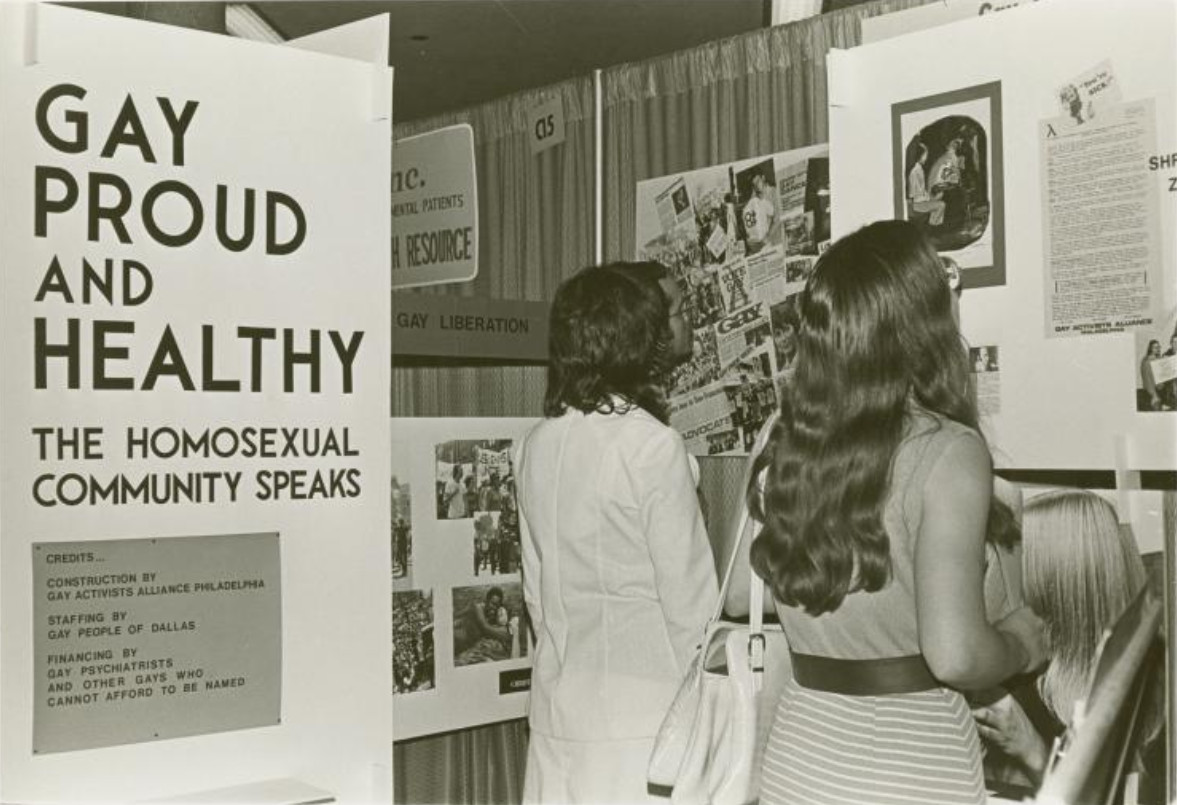
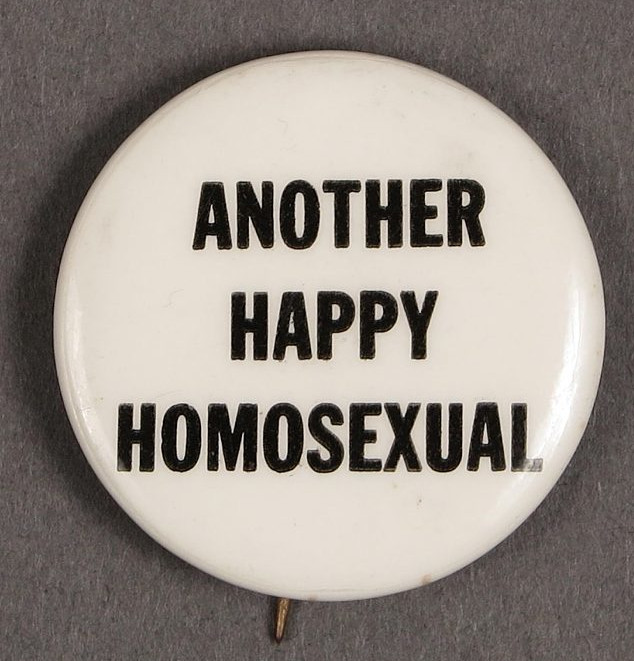
Six years before this APA decision, the internationally famous transsexual Christine Jorgensen published her autobiography. In it, she recollects a party before her transition when a drunken Danish sailor whispered into her boyish ear, “Y’know, if I was a little queer, I could go for you!”
“Even now I can recall my feeling of shock and disgust,” Christine wrote. She could well have written “dysphoria.”
“I didn’t answer him. Suddenly my throat constricted and for a moment I thought I was going to be sick. I spun away from his lumbering figure and pushed blindly through the crowd… until I reached the solid boards of the pier that jutted over the water. I leaned over the edge of the pier and vomited.
…I sat alone in the darkness, drained and limp, devoid of any feeling at all, watching the lights on the opposite shore, though that night they afforded me no comfort. The lights faded and disappeared slowly as wisps of fog began to close over the Sound. The water looked like black velvet, noiseless… motionless… peaceful… inviting. Slowly, an idea began to take form and I remember thinking that beneath the surface of the water, perhaps I could blot out the revulsion and horror I had felt. To know nothingness seemed an answer to my despair. It would be easy, I thought, to end the years of loneliness, the years of hoping and searching, by slipping quietly into the blessed release of oblivion.
I remember that I began to cry then, racked by grief and self-pity, until I was completely consumed by exhaustion and I lay quietly for a time staring into the fog.”4
While the happy homosexual, the homosexual per se, has been essentially liberated from psychiatric oppression through disengagement with the discipline, there persists this pained remainder, doomed to more intractable fates.

Gay militants had detected even before the fact that the sanification of homosexuality would arrive with a fresh mental disability reserved for sad gays alone. They detested it. In a speech at the 1973 annual APA convention, media director of Gay Activists Alliance Ronald Gold railed against a quotation from “your latest well-publicized ‘expert’ in the field,” Dr. Lawrence Hatterer, that “it [homosexuality] most certainly is a sickness when it makes a person feel sick.” “The worst thing about your diagnosis,” Ron retorted, “The worst is that Gay people believe it.”5
It is a fact since lost to queer sensibility, though not lost to Ron, that an overwhelming majority of conversion therapies6 were voluntary.7 A sizable number of psychoanalysts like Dr. Hatterer had acquired powerful and moving careers, bibliographies, and clinical practices built entirely on their promise to cure homosexuals, to homosexuals. Their cure was simple (if extensive, expensive) talk therapy, and most agreed it could only really work on willing8 patients. The new gay sicknesses were manufactured as institutional protection for these analysts, while still mollifying the activists. “I like to think that later, when I was working on the DSM-III,” remembered Robert Spitzer, M.D., who composed the entry on ego-dystonic homosexuality, “I was very good at a kind of nosological diplomacy.”9
Analysts had by this time constructed a diverse, loose, but knowable portrait of the unhappy homosexual. The first kind of sad gay available for study, dictated Charles Silverstein, a gay psychiatry grad bravely out of the closet, to a panel of APA behaviorists in 1972, was “prison inmates.” That is to say, they were involuntary commitments. The second were “patients who were guilt ridden about their homosexuality.” That is to say, they were voluntary commitments. “It is not surprising,” Charles reflected on these two groups, tossing us to the psychiatric dogs, “that objective test results revealed many varieties of psychological impairment.”10
Institutionally committed gays have remained pathological into the 21st century. We could be “explicated,” as one of the last great conversion therapists Irving Bieber wrote, by “the process of identification.”11 The other last great, Charles Socarides, elaborated: every homosexual man entering his practice had a “pronounced feminine identification.”12 Well, some of us do – the ones who are women, at least: the ones who feel significant distress about it, and thus wind up crashing supine onto the analyst’s couch. By 1973 UCLA psychotherapist Robert Stoller had quit beating around the bush, writing plainly, “homosexuality can be roughly quantified according to the intensity of transsexual wishes.”13
The unfortunate womanhood of jailbirds, those unconvertible rejects of society, was frequently broadcast by such men as professional warning against the exceptional tolls of excessive homosexuality. In a characteristic article, Dr. Paul R. Miller analyzed 50 patients who had passed through the U.S. Medical Center for Federal Prisoners as “effeminate passive obligatory homosexuals.”
“One hundred per cent recognized their effeminacy… Thirty-six per cent wanted to be female to the point of having surgery on their sexual organs… Seventy-two per cent claimed at least one homosexual ‘marriage’ in which the subject was the ‘wife’… Their lovers generally, as well as sexually, treated them as women: They called them ‘the little woman,’ ‘my girl,’ ‘my pussy.’”14
This was 1958. Paul had tacitly presumed the impossibility of cure, focusing exclusively on etiology. Others were more vocal. “Severely damaged personalities,” penned Dr. Peter Scott of Maudsley Hospital, London, “The very effeminate, self-advertizing, female-impersonating individual who talks in an affected manner, walks with a mincing gait, wears make-up and frilly underclothes… Psychological treatment, as compared to psychologically inspired handling, does not seem to be successful.”15 “The ideal patient for treatment is an offender,” reflected Dr. John Landers on his unusual 1954 group prisoner conversion effort at The Scrubs, “not a hardened recidivist.”16
It is rare to discover a reaction from these hard recidivists. Occasionally one scrupulous psychiatrist might slip a patient opinion in his case report. Thus we learn of “Richard,” who “exhibiting his feminine attire, wandered on the wrong beat and was picked up with the other girls and driven in a Black Maria to prison, where his true sex was discovered.” “Ever since the age of ten he wanted to be a girl.” The kicker: “Richard then talked about how prison made one more perverted.”17
In literary canon, however, the memory of prison femininity has been embodied in one man. Jean Genet was anticipating relégation, a French penalty of lifetime sentencing for serial petty offenders, after mincing out an antique bookstore in 1943 clutching a premier edition of Paul Verlaine’s poetry valued at $1,400. His fate was salvaged by, firstly, sympathetic mental evaluation from Dr. Henri Claude, who diagnosed him with “moral madness [folie-morale]”;18 and secondly appeal from wealthy avant-gardiste Jean Cocteau, a fellow homosexual who testified Genet was “the greatest writer of the modern era” after reviewing roughs of his debut novel scribbled on sack paper during prior incarceration at Fresnes Prison.
That debut was Our Lady of the Flowers. It was as the analysts would warn, a declaration of excess. Divine is an unapologetic, scatological, piss-drinking “girl-queen” who, hotshot philosopher Jean-Paul Sartre claimed in his adulating preface, is Genet herself. Genet was rather more opaque; Divine is “what for want of a trifle I failed to be.” Never to return to jail, Jean was soon reposturing as a muscular member of the French literati, a lie which held little conviction. His follow-up quasimemoir Miracle of the Rose recalled when he was “sixteen, a girl’s age,” a chicken incarcerated at Mettrey Penal Colony, tendering her holes to its pimps and toughs; such memories grew pained “as soon as I became a male.” (Yet even then, in scattered moments of frail hysteria, his recollections of the colony lay inside “the most sorrowful female head.”) On becoming bride in prison marriage to his man, Divers: “that night was the loveliest of my life.”
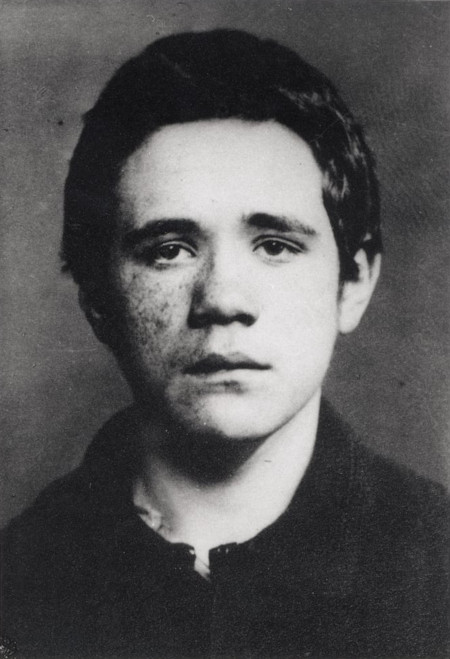
When Kate Millett, in her best-selling 1970 radical feminist treatise Sexual Politics, evaluated Jean’s novels as the only male writing deserving female approbation, a profound “satire on the heterosexual code” produced by a “formidable analytic mind,” it was no coincidence she reached for a medical vocabulary we have not wasted on homosexual men again since their virilizing liberation movement. “Jean Genet is both male and female,” she wrote. “The insouciant queen in drag… has made gender identity more than frighteningly easy to lose…”20
The process of conversion therapy was, in this drag logic, the process of making gay men identify as men. Free gay men volunteering for conversion near the Stonewall era were, therefore, doubly embarrassed, to endure not only a psychoanalysis but a psychoanalysis so plainly designed for trans women. Eminent gay historian Martin Duberman, for instance, requested to be “fixed” into heterosexuality in 1965, only to be (much to his confusion) barked down by therapist Karl for being a straight lady: “You and your mother are not separate people, and that is why your gender identity remains faulty.”21 Karl was running at the forefront of his profession; “gender identity,” the newly dubbed, conspicuously trans nucleus of gay disability, had only been introduced to the literature by Bob Stoller three years prior. Before then, analysands learned their gender problem in a more abstract tongue, as with Edmund White’s unnamed narrator (himself) in A Boy’s Own Story circa 1956: “Paraphrasing Dr. O’Reilly, I added, ‘But you see, Daddy, I’ve internalized my mother…’” Were the macho faggot – a strict contradiction in terms – ever to resist the siren song of health and endorse his own madness, he necessarily had to subordinate himself before this feminine presumption.
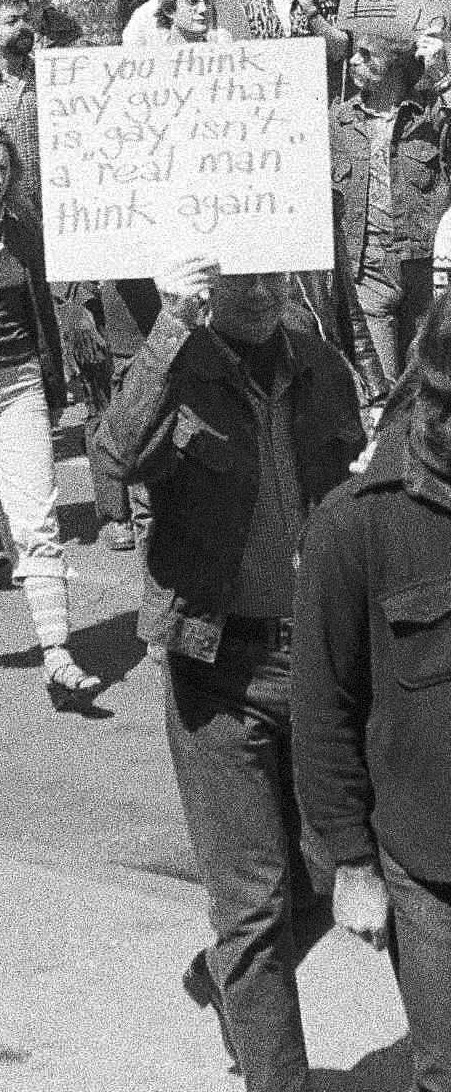
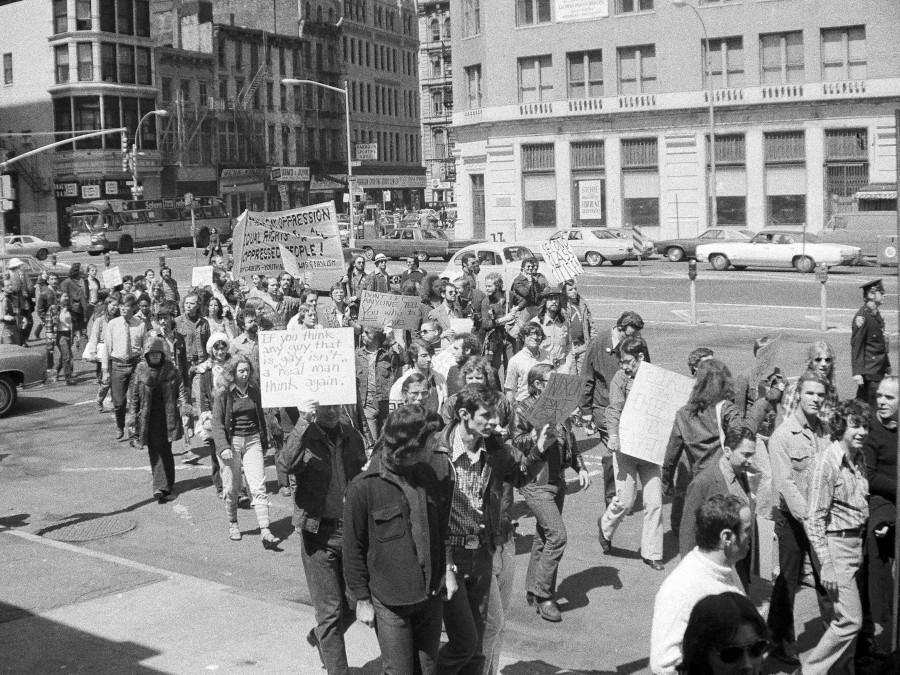
Free transsexual women could not, by definition, be exempt from this process. Our initial psychiatric confrontation was virtually identical. Christine Jorgensen recalled her typical encounter with a first analyst, Dr. Reznick, who tried “to guide me away from these ‘feminine inclinations.’” Young professor Duberman had paid his therapist 20$ a session, at 3 sessions a week, which was “difficult for me to manage financially”; Christine later received “a bill for thirty-five dollars for a fifteen-minute consultation,” for which she claimed need to borrow money. Care of the queer middle classes was a legendary racket.
From this initial confrontation, however, diverged a transgender miracle. Rather than elaborating the torture of conversion over many years, as did Martin or Edmund, Christine rejected it immediately; Dr. Reznick was “not the man who could help me.” In this respect she – I dare suggest most transsexuals – held vaster self-possession and personal knowledge than a great many gays of her era. But also unlike the rising tide of gay liberationists, Christine then set about her clinical reentrenchment. She spent endless weeks in countless public libraries, reading copiously on the science of sex; she enrolled for a dental assistantship just to eavesdrop on endocrinologists speaking about glands; she squared down round after round of rosy-cheeked shrinks in hopes that someone, anyone with license, might verify her mental distress warranted some other meaningful intervention. The exact nature of this intervention was, as yet, unclear.
In this respect trans street bohemians of the lower classes were essentially similar. Lyn Raskin, a New York bird with the rare published diary, behaved more like a prisoner of record in her self-acknowledged promiscuity and fondness for gay sex, yet she too wandered in and out of clinics, anxiously pursuing some vague notion of intervention. Her futile reversal of the medical grasp on her condition is humorous enough to repeat:
“My frustration was not curbed by sleeping around as I have been doing, so I went to Bellevue Psychiatric Clinic for a free consultation with a Dr. Cassity, who I call Hopalong Cassity. He was always jittery, even when I was relaxed. I had about a dozen visits with him. He felt that of all his patients I was the one who accepted his homosexuality more than the others… However, he also knew my desire to be a woman… I have a feeling he was an inmate in their psycho ward. He was probably nuttier than I was.”22
When these ladies of the clinic at last stumbled upon our favored solution, it was rarely advertised as such. The pseudonymous Jane Fry, transitioning in a mental ward in 1968, remembered how “we [Jane with ‘Dr. Lowe’] finally came up with three alternatives for my treatment”: “The first was intensive psychotherapy,” the exact kind of conversion process already detailed; “the second was male hormone shots, and intensive psychotherapy,” the exact kind of conversion process already detailed; “and the third,” Ms. Fry proceeded soberly, “was female hormone shots and psychotherapy as a prerequisite for possible surgery.”23 She uttered this final option so flatly, as if it were… well, the exact kind of conversion process already detailed. For her doctor ranked it below even that kindness.
Clinicians spoke of the postoperative transsexual not as a person returned to health but a patient in hospice care. “It is understood in medical ethics that if a disease cannot be cured an attempt should be made to improve the stress and inconvenience of the patient”:24 this was Christine’s endocrinologist and psychotherapist, publishing jointly on “surgical transvestism” one year after her first operation in 1952. They held the tolerant liberal stance. For Bob Stoller, who had psychoanalytic training, this liberal ambivalence became even more pronounced: “if there were any psychiatric treatment that was even partly useful, it would probably be better than this disquieting ‘psychosurgery.’” “The general rule that applies to the treatment of the transsexual is that no matter what one does – including nothing – it will be wrong.”25
Without general, repeatable, scientific pathways to health, conversion therapists entertained brief hope by gossiping specific, increasingly outlandish successes in transsexual cure. Bob praised one ex-transvestite for ceasing his dress-up after a psychotic break, brought on by his 1960s housewife granting his wish to be sodomized with a homemade strap-on.26 A 1977 paper from University of Tennessee med school recounts a psychiatric exorcism, where “22 evil spirits” fled a previously transsexual body, causing its newly grown breasts to disappear.27 These tall tales, singular, unverifiable, and downright folkloric, were final manifestations of our doctors’ despair.
The pessimistic view of transness as an end-stage cancer of the soul rapidly prevailed, entering the DSM as “Transsexualism” in 1980. This was my own, outdated diagnosis listed on my first clinical outtake form from 2018.
Hormones and surgery were palliative; cure was impossible; the only route left was prevention. In acquiescence to the incorrigibility of trans adulthood, a hip, groovy, post-Stonewall set of sexologists developed a new series of forward-thinking longitudinal studies in search of what they termed “the pretranssexual child.” Psychoanalysis had, after all, not only refined clinical homosexuality to a transgender disorder, but a disorder originating in family life.
Dr. Richard Green had “beads around his neck, long hair, and a full beard,”28 remembered Karl Bryant, who about age seven had been driven by family to Richard’s clinical practice as a prospective pretranssexual. Dick was, however softly, touched by new-aged California hippie swagger: there was no metallic science in the way he jotted about his gender-deviant clinic-children as “sissies” and “tomboys”; in how jovially he compared our prepubescent struggle, in academic writing, to both the dramas and comedies of Shakespeare;29 in how after therapy he took his “feminine boys” up to the clinic rooftop for rounds of horse and basketball. In the late 1960s, with ample funding from Playboy magazine, he initiated the largest study on sissies ever then attempted, 66 families in sum.
“My focus,” Dick wrote in 1969, “will be on what we might consider the prevention of transsexualism.” “I believe an effort should be made to make a psychiatric intervention during a life period in which gender misidentification may be reversible, thus saving the individual a considerable amount of subsequent distress… we need to focus on a pediatric population.”30 While he often summarized his study as merely observational, in truth he agreed to routine conversion sessions with several of its families. There, his treatment notes verify, “My goal… was to discourage any support for his cross-gender behaviors, and encourage boyish behaviors.”31 A brief sampling of Richard’s work transcripts may otherwise speak for itself:
- Richard: You know that sometimes little boys do wish that they had been born girls, and that’s a little bit sad. One reason is that it’s not possible for little boys to become girls, and it’s sad because there are so many fun things that boys can do. They can go places and do things more on their own.
Boy [4 years old]: Umm. - Todd [previous sissy in study; 17 years old]: It takes a long time?
Richard: In the best interest of someone who is considering a change like that, keep in mind that it is an irreversible change you don’t change back again.
Todd: I wouldn’t want to.
Richard: Okay. But the fact is that one should be absolutely convinced, given the assumption that you can’t change back, that this is the best thing for you. What most doctors do who counsel people during this transition period is require people to live for a couple of years as a woman before having the surgery, so that they can be –
Todd: How can you live as a woman if you’re not? - Richard: I don’t know what you’d accomplish by having surgery.
M-F TS [anonymous; adult age]: No.
Richard: I mean if you were somebody who wanted to be screwed by guys.
M-F TS: Yeah.
Richard: Then I could see some logic in it, but I don’t see what the hell you’d accomplish.
M-F TS: No?
Richard: I don’t see any gain in it. There’s a potential for regret too.32
As these records suggest, Dick admitted some difficulty in distinguishing the transsexual and homosexual object. Trained by Bob Stoller,33 his psychology exited a tradition in which “bisexual” meant hermaphrodite, “sexual identity” and “gender identity” were synonyms, and the word “male” had inoffensive consistency. “The differential labeling of transsexualism, transvestism, and homosexuality is not always clear-cut,” he bemoaned, “…diagnostic distinctions may be blurred. Unequivocal categorization may be difficult.” “We thought we were studying pretranssexuals [in the sissy boy study]. Ultimately, it appeared that pattern was probably prehomosexuality.”
There were, then, three patient miseries on which Dick and Bob counted themselves regularly attending, and all overlapped. One was transsexuality, whose conversion therapies and classification as mental illness they actively promoted. Two was childhood gender-variance, whose mental illness their studies helped create. Citing Richard’s books, in 1980 a new diagnosis of “Gender Identity Disorder in Childhood” (one 1976 proposal suggested “Gender Dysphoric Disorder”34) entered the DSM – right beside Transsexualism, through which it was spookily woven, yet somehow never identical. “This disorder becomes continuous with Transsexualism,” the DSM tells us, only “in a small number of cases.” A lovely optimism. In this post-Stonewall psychiatric mainstream, there could be no such thing as a trans kid.
Finally, there was the old mainstay of self-hating gays. While ego-dystonic homosexuality developed as, technically, a distinct diagnosis, there had been constant professional insinuation of overlap with the trans condition. “Is the transsexual homosexual?” Harry Benjamin asked in his watershed 1966 textbook The Transsexual Phenomenon (featuring an appendix by none but the young Dr. Green). “‘Yes’ and ‘no.’” Harry then insisted that “he [‘the transsexual’] actually dislikes homosexuals,” a clinical mandate which had undeniable influence over the popular memoirs of Christine Jorgensen (who knew Harry as a “great friend”) and therefore countless others. Meanwhile Norman Fisk, lead psychiatrist at Stanford’s reorientation program, coined the term “gender dysphoria syndrome” in 1974 to net together “transsexuals,” “effeminate homosexuals” (who thought they were transsexuals), “psychotics” (who thought they were transsexuals), and “extreme sociopaths” (who thought they were transsexuals). This new disease cluster, he illuminates, “obviously liberalizes indications and requirements for sex conversion surgery.”35 Under his new, open-minded guidelines, that surgery was given to less than 10% of his patient load;36 but homosexual men were, at least, theoretically legitimate candidates.
Integration with the Gay Liberationists for these diverse transsexualities was understandably mixed. There was, at onset, a young and gay disordered mass, eager to plunder the depths of their own madness, explode the varieties and intensities of human feeling, and establish mental illness as “revolutionary sanity by the oppressed” (Flaming Faggots collective, 1973).37 Their antihero Jean Genet had even returned from his grave, refashioned as a politico after years of silence, touring with Black Panthers following the first English stagings of his racially charged midlife plays. His friendly lesbian critic, Kate Millett, was herself involuntarily asylumized by family, after which she joined the Madness Network and advanced a deeply personal antipsychiatry through her speeches and writing.
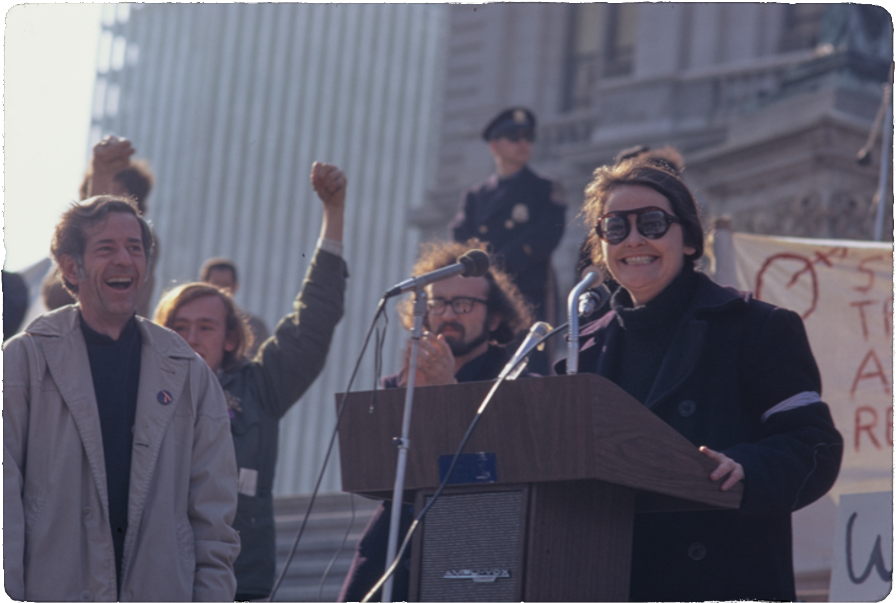
Transsexuals of even the most unredeeming fates rode tall in this crowd. First and foremost were the girlies,38 those “women [who] have tried to fight for their sex changes, or to become women of the women’s liberation,” as their de facto New York City leader Sylvia Rivera screamed it storming the 1973 Christopher Street Liberation Day rally.39 (Identifications were not always so pure; Sylvia herself, on and off estrogens and methadone, called herself a woman, a man, a “yenta,” a “half sister,” and “just me, Sylvia.”40) Broadly underage, Black, brown, street hooking, and regarded, only sometimes pejoratively, as “mentally-disturbed”41 by the liberationists, not every kiddie queen was politically active. But those who squatted with Sylvia at 213 East 2nd Street – Bubbles Rose Lee, Bebe Scarpinato, Bambi L’Amour, Andorra Marks, about fifteen kids (and five stray puppies) beside their patron saint Marsha P. Johnson – were.
Girlies, particularly Sylvia, laid down their bodies for just about any gay cause, but nothing brought them out like the prisons and asylums. On October 5th, Bebe, Marsha, and Sylvia (at minimum) turned out in protest against the “Bellevue Butcher Shop,”42 the psychiatric clinic where Sylvia had once spent several months restrained after an adolescent suicide attempt.43 That month she managed to sneak in with gay activist Arthur Bell to interview a “black male transvestite,” the dancer Chris Thompson, held against will for weeks due to her “femme tendencies.” “What do you feel about the sort of thing that Sylvia is into?” they asked. “I think it’s beautiful,” Chris said. “I think I’m all for it.”44
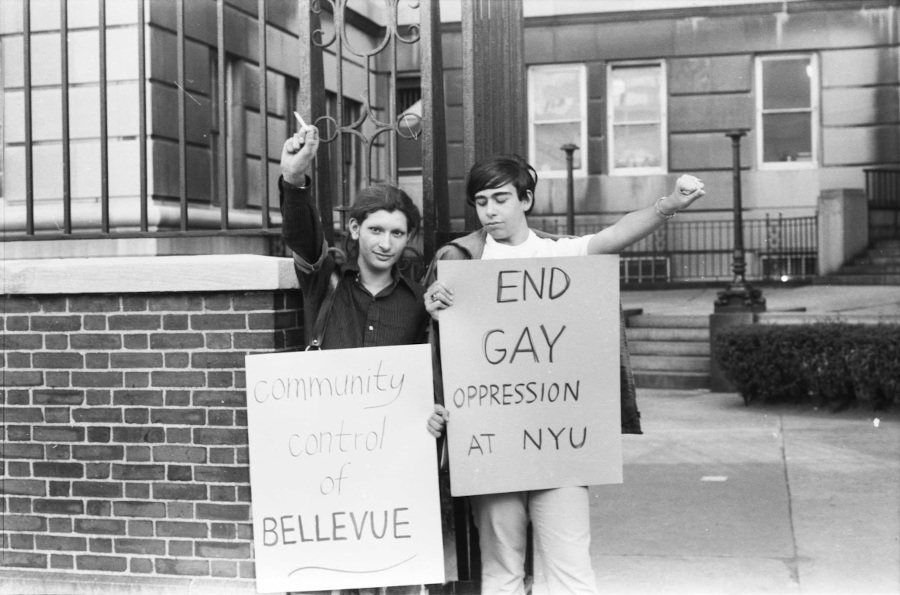
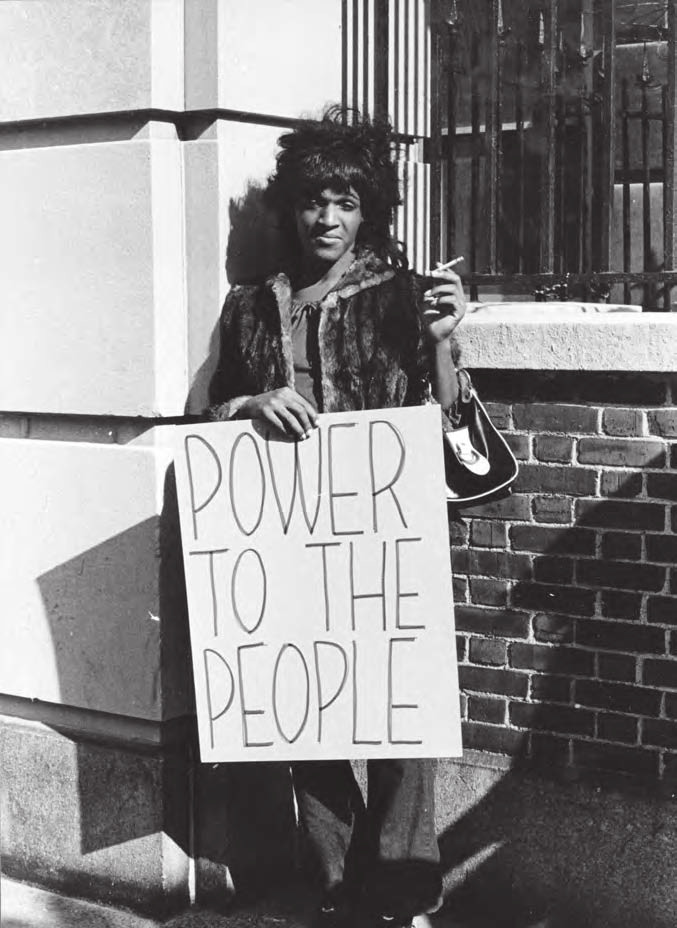
Jane Fry, after her mental ward transition, joined up with the “Gay Liberation League [sic],” who were the first to embrace her as a woman, a “den mother,” laughing that she was “the only straight member of their organization.” Their embrace, she suggested, saved her from suicide. Come Out!, the foremost publication of the Gay Liberation Front, gave space not just to trans writers, but prison writers, whose transness burst forth unrequested:
“Hello! We, the gay prisoners and the transsexuals in this the Washington State Penitentiary at Walla Walla, Washington, are organizing a chapter of the Gay Liberation Front, the first of its kind within a prison, at least within the State of Washington. We are willing, as we must be, to fight the state, the prison administration, and the PIGS within, for our rights as human beings, as prisoners and as citizens.”45
These words, formatted right above a poem by Sylvia, were written in 1971 by Christina Kempf (née Wheeler),46 an Indigenous Cheyenne trans woman serving a life sentence after turning herself in for killing her rapist. She had contacted the Front in hopes of obtaining their official sanction, a comic misunderstanding of how this new grassroots counterculture operated. Having submitted an insanity plea at trial, been diagnosed with incipient schizophrenia after her tenth odd suicide attempt, moved in and out of asylums throughout her youth, it was the Gay Liberation Front which sought official sanction from her.
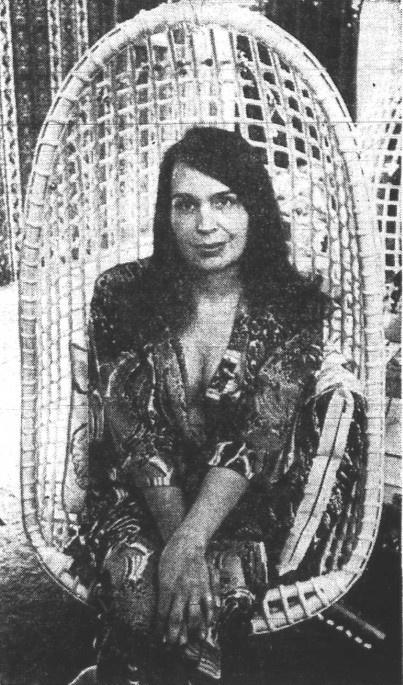
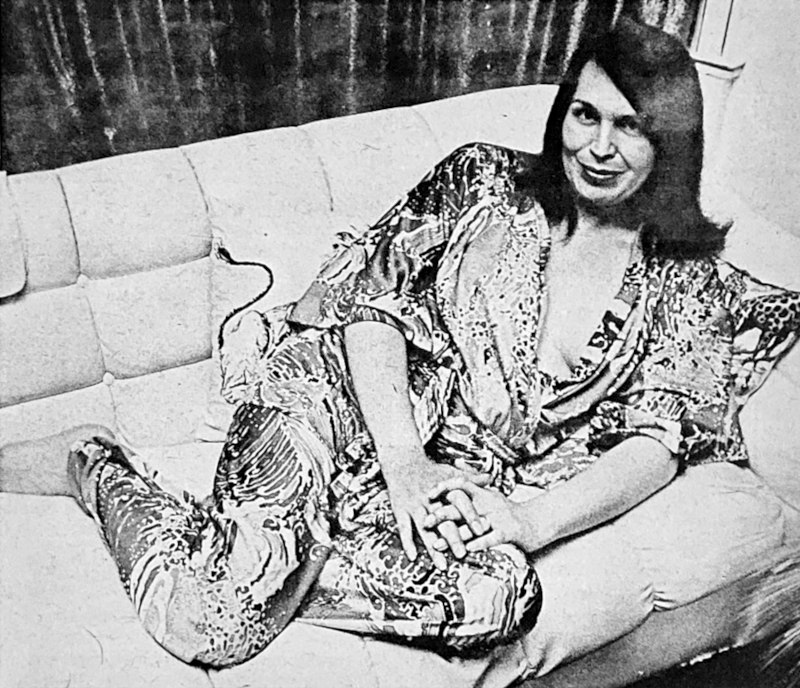
Christina had been recommended the harshest punishment (later commuted) as “rehabilitation” – her own writings make clear this was a conversion effort – but in fact the opposite occurred. The Chris Wheeler Legal/Medical Aid Fund, alternately referred to as the Homosexual/Transsexual Defense Fund, garnered at least 5,000$ for trans prisoner surgeries and lawyer’s fees. At Walla Walla she met an “adult consenting love partner,” her prison husband Andrew, who became her civilian husband, in deed if not in law, for the last twenty-eight years of his life.
These were the happy highlights, the chaotic joys of “anything-goes” participatory democracy in its earliest, most human, and therefore most politically inept stages. The full range of ordered gay radicalism would prove quite capably saturated with anti-trans sentiment. To Christina’s right there were the legacy homophiles, elder gay gentlemen whose continued activism into the ‘70s nonetheless integrated and crossed over with the young radicals. Babyfaced queers jeered from the audience at the outrageously homophobic psychiatrists the fifty-year-old Franklin Kameny would debate on public access T.V.; certainly they did not know that Richard Green, the psychiatrist they cheered who Frank courted for a scientific endorsement of same-sex marriage, was one of the more prestigious anti-trans conversion therapists in his field.
In the 1970s, Dr. Green found himself in the unlikely position of signing on with the gay radicals. “Many homosexual adults contend they are proud to be ‘gay,’” he wrote in 1974, “Their pride is not being challenged here.”48 That prior year, he played a lead role in the reduction of homosexuality as a mental illness. Around this moment, distinctions between adult gay men and trans women became magically clearer to him. He edited his rhetoric accordingly: transsexualism might be “aborted” in gender disordered children, he asserted with renewed hope, such that they “evolve into adult homosexuals.”49
Even to gays further in the vanguard of youth than Frank Kameny, this proposition had its charms.50 There were self-styled “revolutionary effeminists” like Steven Dansky or Kenneth Pitchford of the Flaming Faggots collective, who penned letters, poems, and manifestos declaring a joyless gay militancy: an effeminist would vitally help women with “drudgery and childcare,” but must never crossdress, be masochistic, indulge camp humor, or contemplate transsexuality as more than “superficial decoration.”51 Thirty years later, Steven had become an LGBT therapist, where he, by his own admission, took on “a ‘gatekeeper’ role” to “assess the mental stability of transgenders.”52
A slightly older few, like Marty Duberman and Ron Gold, knew intimately the emasculating harm of “reparative psychoanalysis” and its “gender identity disorder,” and had a stark reaction. Ron’s 1973 pro-gay protest speech before the APA affirmed their psychiatric view that, if “one [gay] partner is conceived as feminine,” this really was a “second-best parody” of heterosexuality.53 (Thankfully, Ron liked his men male.) Marty, in the early 1970s, was at work on a one-act play about capital-T Transsexualism, which he recalled as “an unflattering portrait of a patient awaiting surgery.”54 These were expressions of gay men working through their own intricate and perfectly justifiable “macho trips,” as Ron named it. It was less misogyny – such gay male activists got hip on women and moved righteously in the blooming radical feminist movement – than it was transmisogyny, specifically. Contempt for real versions of themselves who had believed they were sick slid into disdain for imaginary versions of themselves who had believed they were women.
Within what vestiges of Gay Liberation remained after 1980, paranoia about the integrity of gay male identity grew marked. Dr. Lawrence Mass, M.D., co-founder of Gay Men’s Health Crisis, wrote consistently for gay periodicals across that decade that “American psychiatry is simply engaged in a long, subtle process of reconceptualizing homosexuality as a mental illness with another name – the ‘gender identity disorder of childhood.’”55 Within the newly developing academic field of queer theory, grandmother theorist Eve Sedgwick also took umbrage with the GIDC concept, accusing its purveyors of “a medicalized dream of the prevention of gay bodies.” This accusation occurred in her foundational 1991 essay titled “How to Bring Your Kids Up Gay”; it is never quite clear whether Eve might be using “gay” with the more anarchic texture of Jean Genet’s 1940s, but her language makes it tenuous.56 She did not address the word “trans,” at fear of legitimizing the disorder.
When dust settled on Gay & Women’s Liberation, there was air to breathe for a kind of vulgar antipsychiatry, which was anti-trans in effect and spirit. Lord daddy of antipsychiatry, author of The Myth of Mental Illness Thomas Szasz, gave in 1979 a very warm review to Janice Raymond’s feminist anti-trans propaganda effort, The Transsexual Empire. He began:
“In the old days, when I was a medical student, if a man wanted to have his penis amputated, my psychology professors said that he suffered from schizophrenia, locked him up in an asylum and threw away the key. Now that I am a professor, my colleagues in psychiatry say that he is a ‘transsexual,’ my colleagues in urology refashion his penis into a perineal cavity they call a vagina, and Time magazine puts him on its cover and calls him ‘her.’ Anyone who doubts that this is progress is considered to be ignorant of the discoveries of modern psychiatric sexology, and a political reactionary, a sexual bigot, or something equally unflattering.”57
Tom’s preference for the involuntary commitment of transsexuals is especially remarkable given how beloved he was in much of the gay subculture, interviewed by Larry Mass for Christopher Street and excerpted at length in the gay and lesbian supplement to Phoenix Rising: the voice of the psychiatrized. He had been calling homosexuality “natural” since at least 1970.
Similarly, New York Native, the premier gay magazine of New York throughout the ‘80s, was only too happy to namedrop Tom Szasz, or print claims from such feminist champions of gender-neutrality as Letty Cottin Pogrebin that,
“Rather than transgress gender lines, transsexuals mutilate their bodies to match their sex role preference. Many psychologists consider transsexuals people who cannot handle the guilt of their homosexual object choice in heterosexual culture.”58
This stigma of gender transition as conversion therapy weighs even on more contemporary historical scholarship from academic progressives, as when Emily Skidmore, in an award-winning 2011 essay on Jorgensen for Feminist Studies, claims Christine’s vomiting episode and suicidality demonstrates “an allegiance to heteronormativity.”59 Need I go on?
Activist pressure of this kind has whittled homosexuality out of the DSM. “Ego-dystonic homosexuality” was stripped down to “Sexual Disorder Not Otherwise Specified” in 1987, subclass “persistent or marked distress about sexual orientation.” In 2013, once the last of the establishment conversion therapists were rotting underground, even this vanished. The only reference to the disability of homosexuality in the most recent DSM is a heightened rate of erectile dysfunction.
Transgender diseases have faced no such attrition, just silly wordplay. In 2013 activist pressures achieved what Stanford physicians had recommended four decades prior, a diagnostic collapse of gender identity disorders into “gender dysphoria,” because it was “more descriptive” and “focuses on dysphoria as the clinical problem, not identity per se.” This was what was listed on my surgical outtake form in 2021. “Gender dysphoria in childhood” remains a distinct “criteria set,” removed from its adolescent and adult varieties for no better reason than the ambition it should disappear. “Dysphoria” on its own has never been defined in the DSM. Used also for schizophrenia and major depression, it means something like Christine’s “grief and self-pity.”
For the better part of a century, doctors have been trying, and consistently failing, to cure our disease of transsexualism (so listed until 1994). They shall have to settle for curing our disease of grief and self-pity.
□
0A great deal of thanks for this essay is owed to a great number of people. I cannot hope to name them all. Thank you especially to Viktor Veltstra of the Trans Doe Task Force and Benjamin Serby for their help tracking down information on Christina Kempf (see fn. 46). Thank you also to Cured directors Patrick Sammon and Bennett Singer for providing access to their digitization of Ron Gold’s full speech before the APA in 1973, as well as providing remembrances of their interviews with him. And thank you to Asa, Lydia, Jackie, and Shielding for their preliminary readings of this essay. The rest of my helpers shall have to remain nameless. A bibliography for general readers is provided below.
Theory: I regard myself as a narrative historian and thus rarely cite works of theory but to historicize them. Nonetheless, there have been many recent attempts to not repudiate but write into so-called “queer negativity,” in which others may place this essay. It would be rude not to cite some: Leo Bersani’s Is the Rectum a Grave? (1987), Cameron Awkward-Rich’s The Terrible We: Thinking with Trans Maladjustment (2022), Ann Cvetkovich’s An Archive of Feelings: Trauma, Sexuality, and Lesbian Public Cultures (2003), Hil Malatino’s Side Affects: On Being Trans and Feeling Bad (2022), and everything about transness Andrea Long Chu has ever written.
Homosexuality as illness: The greatest book on the APA 1973 reduction of homosexuality as a mental illness is very clearly Ronald Bayer’s Homosexuality and American Psychiatry: the politics of diagnosis (1983), a truly excellent text. Also useful has been Jack Drescher’s almost tediously thorough historical work; I would suggest especially American Psychiatry and Homosexuality: an oral history (2007). For a broader history, I recommend Kenneth Lewes’s The Psychoanalytic Theory of Homosexuality (1988). It is neither wise nor honest to narrativize the history of transsexuality as illness apart from homosexuality, so I will suggest none.
Childhood as illness: Concerning Gender Identity Disorder in Childhood (or Gender Dysphoria in Children) I would recommend beyond doubt Karl Bryant’s thesis The Politics of Pathology and the Making of Gender Identity Disorder (2007). This text is the only one I can honestly admit as a direct influence on this essay. I would also suggest Jules Gill-Peterson’s Histories of the Transgender Child (2018).
STAR House: Surprisingly given its tremendous discursive weight, relatively little writing of real historical substance about Sylvia Rivera, Marsha P. Johnson, and STAR House has been written. It appears the best study has been Chpt. 5 of Stephan Cohen’s The Gay Liberation Youth Movement in New York (2007), which I recommend heartily.
1See “Homosexuality and Sexual Orientation Disturbance: Proposed Change in DSM-II, 6th printing, page 44” (1973), APA Document No. 730008. The rationale provided by Robert Spitzer contains the following parenthetical aside whose paradox is the heart of this essay: “(By linking the removal of homosexuality from the diagnostic nomenclature with an affirmation of the civil rights of homosexuals, no implication is intended justifying the irrational denial of civil rights to individuals who do suffer from true psychiatric disorders.)”
2The term “homosexual dysphoria” is used directly in Lief & Kaplan’s “Ego-Dystonic Homosexuality” in Journal of Sex & Marital Therapy (1986), vol. 13 nr. 4, pg. 265. Within the scant literature on EDH there are relatively many references, e.g. “the dysphoric and conflicted homosexual” (“Treatment of Ego-Dystonic Homosexuality” (1985), vol. 13 nr. 3, Journal of the American Academy of Psychoanalysis).
3[Note: This footnote belongs to a piece of supplemental media.] The likely date of this button is 1970; it is almost certainly an illusion to the infamous quote from The Boys in the Band, “Show me a happy homosexual and I'll show you a gay corpse,” which was included in the wide-release film adaptation by William Friedkin from March 1970.
4See Christine Jorgensen: a personal autobiography (1967) as rereleased by Cleis Press (2000), pg. 75. Christine discussed her transition as a “return to normalcy,” but the fact remains she keenly felt her aberration before transition, as here, and perhaps at times after. All quotes by Christine are from this book unless stated otherwise.
5Ron’s speech, “Stop It, You’re Making Me Sick!” can be found in Speaking for Our Lives: historic speeches and rhetoric for gay and lesbian rights (2014) ed. Robert Ridinger, pgs. 212-224. The referenced book by Lawrence Hatterer is Changing Homosexuality in the Male: treatment for men troubled by homosexuality (1970).
6I have used “conversion therapy” or “conversion” in concession to popularity of that phrase. A more analytically informed name might be “reparative psychoanalysis”; see Jack Drescher’s “I’m Your Handyman: a history of reparative therapies” (1998) in Journal of Homosexuality, vol. 36 nr. 1, pgs. 19-42.
7This statement is interpretive. It concerns the time before conversion evangelicized around 1973, shifting population of concern from voluntary adults to involuntary children. It is also somewhat U.S.-centric. The situation in England was different in two respects: firstly NHS standardized conversion treatments for criminal convictions; secondly treatments in question were not psychoanalysis but new behaviorist aversion therapies. See “Treatments of homosexuality in Britain since the 1950s – an oral history: the experience of patients” (2004) from Glenn Smith, Annie Bartlett, and Michael King in BMJ, vol. 328, pg. 427; and Tommy Dickinson’s ‘Curing queers’: Mental nurses and their patients, 1935–74 (2015). Britain’s public patients were the U.S.’s public prisoners., and “it is well known that psychiatric treatment of any depth is rarely to be found in prison” (“Law and the Sexual Offender” (1964), T.E. James). In any country private patients seeking conversion virtually always chose analysis.
8The clearest exposition of this comes from the notoriously influential homophobe Edmund Bergler. Point II in his “Eight Prerequisites for the Psychoanalytic Treatment of Homosexuality” (1944), The Psychoanalytic Review, vol. 31, pg. 272 is “Voluntary Acceptance of Treatment.” (Point VII is “No Authoritative Assertion of Incurability.”)
9Quote from “An Interview with Robert L. Spitzer, MD” in American Psychiatry and Homosexuality: An Oral History (2007), pg. 101. It is rare to hear a scientist so openly concede his science as a political negotiation.
10Charles Silverstein’s speech “Even Psychiatry Can Profit From Its Past Mistakes” was reprinted in Journal of Homosexuality (1977), vol. 2 nr. 2, pgs. 153-8.
11See Irving Bieber, Homosexuality: A Psychoanalytic Study (1962), pg. 22, but also pg. 206: “The process of identification… The expressed desire to be a woman occurred significantly more often among homosexuals…” This book is the period on a canon of truly monumental contributions to psychology by gay conversion artists; everything following it has been a remnant.
12See Charles Socarides, “Psychoanalytic Therapy of a Male Homosexual,” The Psychoanalytic Quarterly, vol. 38, nr. 2, pg. 174.
13See Robert Stoller, Splitting: a case of female masculinity (1973), pg. 282. Bob cites Sándor Firenczi’s 1914 division between “subject” and “object” homosexuality as an alternate model (the subject homosexual being “incurable” and a “true constitutional anomaly,” but not as “important socially” due to our rarity). Sándor’s model is closer to what has come to pass.
14See Paul R. Miller, “The Effeminate Passive Obligatory Homosexual” (1958) in Archives of Neurology & Psychiatry, vol. 80, nr. 5. I am unsure the provenance of “obligate homosexuality”; it is meant in the sense of “obligate carnivore.”
15See P.D. Scott “Homosexuality, with Special Reference to Classification” (1957), Proceedings of the Royal Society of Medicine, v. 50, nr. 9, pg. 756.
16See John Landers et al.’s “Group Therapy in H.M. Prison, Wormwood Scrubs” (1954) in Journal of Mental Science, vol. 100, nr. 421, pgs. 953-960.
17See “Exhibitionism, Scopophila, and Voyeurism” by Ismund Rosen in The Pathology and Treatment of Sexual Deviation (1964), pg. 299.
18There are two strong articles on Jean Genet and psychiatry. These are “Jean Genet’s Psychiatric Examination in 1943” (1989) by Harry Stewart and Roy McGregor (authors who, make no mistake, despise Jean) in The French Review, vol. 62, nr. 5, pgs. 793-802; and “Deux psychiatres chez Genet: autour de la «responsabilité»” (2005) by Suguru Minemura in The Geibun-kenkyu: journal of arts and letters (藝文研究), vol. 89, pgs. 270-285. See also Edmund White’s Genet (1993), pgs. 216-221.
19Todd Haynes’s version is indeed very interpretive. Jean Genet is “John Broom,” who wears a veil (Genet states specifically there was no veil). The marriage ceremony is likely homosexualized; in prison weddings the wife is rarely formally acknowledged as a man. Todd’s more general spirit of masochism, pastoralism, and bitterness is spot on.
20See Kate Millett’s Sexual Politics (1970), pg. 343. The volume contains an earlier specific discussion of Robert Stoller and the psychosexual construction of gender identity on pgs. 29-30. Kate remains, outside of Lorraine Hansberry, Genet’s most perceptive feminist critic of the period (and there were many).
21See Martin Duberman’s spectacular autobiography Cures (1991), pg. 104.
22See Lyn Raskin’s Diary of a Transsexual (1971), pg. 133. This diary entry itself is dated to 1955. Its publisher, Olympia Press, was an erotic imprint that also put out the first edition of Vladimir Nabokov’s Lolita (1955). As such the diary is enjoyably more cavalier, and slightly more pornographic, than most higher profile trans memoirs of the era. It is undercited.
23See Jane Fry’s Being Different: the autobiography of Jane Fry (1974), edited by Robert Bogdan, pg. 104-105. This book is my favorite trans memoir.
24See “Transvestism: hormonal, psychiatric and surgical treatment” (1953) by Christian Hamburger (Christine’s endo), Georg Stürup (Christine’s analyst), and Erling Dahl-Iversen (Christine’s surgeon) in Journal of the American Medical Association, vol. 152, nr. 5, pgs. 391-6.
25See chpt. 21 “The Treatment of Transvestism and Transsexualism” in Robert Stoller’s Sex and Gender: the development of masculinity and femininity (1968), pgs. 241-254. These quotes are pgs 249, 247 specifically.
26Bob’s Sex and Gender (1968) again, pg. 245: “…paranoid psychosis precipitated by his having his wife, dressed like a prostitute, attach to herself an artificial penis he had made, with which she then performed anal intercourse upon him.”
27See “Gender Identity Change in a Transsexual: An Exorcism” (1977) from David Barlow et al. in Archives of Sexual Behavior, vol. 6, nr. 5, pgs. 387-395. The modern controversy about David’s work on transsexual cure has largely overlooked its intense absurdity. Of all conversion artists I have studied, he is the least rational.
28This memory is from Karl Bryant’s excellent PhD thesis The Politics of Pathology and the Making of Gender Identity Disorder (2007), pg. 3. I cannot recommend this work highly enough. Many of my views and sources for GIDC were first found, organized, and developed by Karl here.
29Dick leads his section on the “Pre- and Early Adolescence” of his “feminine boys” in The Sissy Boy Syndrome (1987) with a quote from Twelfth Night, pg. 107. In his 2017 editorial “To Transition of Not To Transition? This Is the Question” for Current Sexual Health Reports, vol. 9, nr. 2, pg. 79, written shortly before his timely death, he invents “a 5-year-old gender dysphoric Hamlet.” These were his attempted gestures at humanism.
30See Richard Green’s “Diagnosis and Treatment of Gender Identity Disorders During Childhood” (1971) in Archives of Sexual Behavior, vol. 1, nr. 2, pg. 167.
31See Richard Green’s Sissy Boy Syndrome (1987), pg. 266.
32Samples 1, 2, 3 respectively from Richard’s Sexual Identity Conflict in Children and Adults, pg. 189; Sissy Boy Syndrome, pg. 186; back to Sexual Identity Conflict, pg. 84.
33The extent to which Bob influenced Dick has been largely underestimated. Stoller prefaced his first single-author book, and Green’s notorious Sissy Boy Syndrome was in fact heavily dedicated to evidencing many of Bob’s theories, which it in fact did (or claimed to), see pg. 375, 382 for Green’s advocacy of Bob’s theory effeminacy is caused by being a “beautiful baby”; or pg. 68 for his advocacy of Bob’s theory effeminacy is caused by having a transmasculine mother.
34This suggestion was made by Robert Spitzer. See Karl Bryant’s The Politics of Pathology and the Making of Gender Identity Disorder (2007), pg. 170.
35See “Gender Dysphoria Syndrome (The How, What, and Why of a Disease)” by Norman Fisk in Proceedings of the Second Interdisciplinary Symposium on Gender Dysphoria Syndrome (1974), pg. 14. I obviously disagree that Norm liberalized anything; Harry Benjamin’s clinical views, which he claimed to supplant, were much more liberal. In publications he did not make on funding from the Erickson Foundation his animosity is clearer, e.g. “To change a person’s God-given anatomy is a repugnant concept”; “Surgery is not proven to be the treatment for the transsexual condition”; etc. Fisk is primarily responsible for the creation of “gender dysphoria” as a term.
36See Donald Laub & Norman Fisk’s “A Rehabilitation Program for Gender Dysphoria Syndrome by Surgical Sex Change” (1974) in Plastic and Reconstructive Surgery, vol. 53, nr. 4, pgs. 388: “769 such patients… 74 of them were operated on (9.6 percent of the original requesting group).”
37See Abram J. Lewis, “‘We are Certain of Our Own Insanity’: Antipsychiatry and the Gay Liberation Movement, 1968-1980” (2016), Journal of the History of Sexuality, vol. 25, nr. 1, pg. 101. Ironically the Flaming Faggots collective would prove rather anti-trans in outlook (Abram may have taken their radical inclusion of the ill on faith). The “Thirteen Principles of Revolutionary Effeminism” Abram quoted is repeated verbatim in the better known “Effeminist Manifesto” from that same year (1973), just reprinted in Male Femininities (2023), ed. Dana Berkowitz, Elroi J. Windsor, & C. Winter Han.
38On my use of “girlies” see “Star Trek: Transvestites on the Street” by Arthur Bell in Village Voice, July 15, 1971: “They call themselves ‘girlies’… STAR doesn’t put this [the Warhol dolls or show queens] down. Those girls are gay sisters, but they’re not girlies, or STARs.” Sylvia was still using the term “girlie” in 1995 during an interview with Randy Wicker and Tom Iorio at the pier on Septermber 21, 1995 (Thomas Iorio Stonewall Vets video recordings. Box no. OHAC C14, Columbia Center for Oral History).
39Sylvia stated this during her infamous “Y’all better quiet down” speech, a transcript of which can be found reprinted in the collection Street Transvestite Action Revolutionaries: Survival, Revolt, and Queer Antagonist Struggle from Untorelli Press (2013). This collection owes a great deal to Tourmaline’s earlier archival work.
40Sylvia referred to herself and Marsha as “yentas” and “crazy women” on pg. 310 of Martin Duberman’s Stonewall (1993); she called herself “just a man who likes to dress up” and “just me, Sylvia” in Martin Duberman’s Has the Gay Movement Failed? (2018), pg. 38. (She repeats a somewhat similar sentiment in “Queens in Exile: The Forgotten Ones” from GenderQueer (2002) ed. Joan Nestle, Riki Wilchins, and Clare Howell (2002): “I’m tired of living with labels. I just want to be who I am. I am Sylvia Rivera.”) She called herself a “half sister” in Come Out!, vol. 2, nr. 8, pg. 10. In “Queens in Exile” she called herself a “beautiful drag queen,” but decades earlier at the Weinstein protest, corrected someone calling her a drag queen with “transvestite”; see The Gay Liberation Youth Movement in New York (2007) by Stephan Cohen, pg. 113. All these contradictions are, of course, irrelevant.
41See for instance “Behind the Lines on Gay Pride Sunday” by Randolfe Wicker, Gay, nr. 106, July 1973, pg. 3. This instance is certainly pejorative.
42The phrase “Bellevue Butcher Shop” was used during the NYU-Weinstein basement sit-in, which was where Sylvia got the idea for STAR. See the sit-in demands reprinted in Donn Teal’s The Gay Militants (1971), pg. 209; or Gay No. 36, October 26. 1970, pg. 12.
43See The Gay Liberation Youth Movement in New York (2007) by Stephan Cohen, pg. 104. Sylvia stated in “Queens in Exile” that Marsha also “had been locked up several times in Bellevue.”
44See “Chris: Prisoner in Bellevue” printed in Gay Flames, November 14, 1970, pgs. 1, 2, 7.
45See Come Out! #7b, pg. 10. Christine sent a very similar essay to Gay Sunshine the prior month, which was published in March 1971, vol. 1, nr. 6.
46The only writing on Christina I am aware of is Benjamin Serby’s article “‘Not to Produce Newspapers, but Committed Radicals’: The Underground Press, the New Left, and the Gay Liberation Counterpublic in the United States, 1965-1976” (2023), Journal of the History of Sexuality, vol. 31 nr. 1, pgs. 17-19. As such I will try here, to best of my ability, to write a full biography.
Christina Keithana Kempf was born Charles Russell Wheeler on April 18, 1936 in Rosebud, Montana to Dewitt Carlton Wheeler and Mary Caroline Henry. She had four sisters and two brothers, and was mixed Indigenous on three sides (Sioux, Cheyenne) and white on the other (French). Her childhood was likely religious, given multiple affirming references to Christianity throughout Christina’s life. She preferred to play with her sisters, but claimed not to have been bothered by her family about it; however, later there was likely some strife and alienation, as her name was not updated on any family trees, her transition seemed a bit of a family secret, and few knew she had been to prison. She has a quote of reminiscence from childhood: “All I knew was I wanted to be a girl and I wasn’t.” At the age of 18, Christina wrote a letter to a surgeon after reading about Christine Jorgensen, but was told vaginoplasty was not done in the U.S. because it was mutilation.
At the age of 16 Christina was married to a woman. She recalled that her wife always "knew about my feelings," but had hoped to change her. They did not sexually interact for the first year of marriage, but the wife (unnamed) had three miscarriages. They divorced at 21. The gay men she knew also dissatisfied her. She reflected “The homosexual life was a disappointment. I wanted to talk love and marriage, pots and pans, and they wanted to talk sex.” After this divorce, she became an alcoholic depressive (“I drink whenever I can”) and later entered Eastern State Mental Hospital in Washington, where she received her schizophrenia diagnosis and began wearing dresses and make-up. Due to this behavior she received shock treatments. She began to suffer memory loss as a result and was known to “wander around,” becoming known as a “transient,” although she definitely had settled in Washington by at most the age of 23.
Around this time newspapers began to report her troubles with the law. She trashed her friend’s house and set it on fire when they abandoned her for a party. She was later sentenced to twenty years in Idaho State Penitentiary for trying to cash her boyfriend’s false checks. Here she pushed from prison trans care, and was released after three years. Her lifetime sentencing arose when at the age of 36 she was convicted of murdering Joseph A. Grady, stabbing him 13 times with a knife and hitting him with a pipe threader. Her state attorney, T. David Gnagey, initially submitted an insanity plea. This plea was withdrawn around January 7, 1967. Her trial became sensational when she admitted to being a homosexual (who “really feels like a woman”) and accounted the murder as defense against rape. She recalled visiting her brother for a clean shirt, seeing a priest, then turning herself in, telling officers “I think I killed a man.” By later testimony she recalled the police offering coffee and admitting her actions without a lawyer. She was given a maximum term of life so officials had “more time” for “rehabilitation.” Her number was #213735.
While we cannot be sure, it is very likely she met her future husband Andrew P. Kempf in prison here, as he was given maximum sentencing of 20 years for forgery in 1970. This is likely the “adult consenting love partner” in prison Christina will later reference. With the rise of Gay Liberation Christina wrote two major works: her “The Forgotten Ones: Gays in Prison” (as “C Chris Wheeler”; first printed in Gay Sunshine), and the National Gay Prisoners Coalition charter. She also opened a Gay Liberation Front chapter in prison, having about 15 members. In her writing, she made the case for drastic prison reforms and provided an in-depth, early account of attempting to transition from prison.
Christina was released in 1973. She had received a 1,000$ transition donation from an anonymous donor, which she used for breast augmentation and hormone therapy. She married Andy on April 29, 1973 at a hippie church, which funded a honeymoon in Hawaii. In 1974 they were both sentenced for a drug-related charge, where they shared a cell. Christina was released sooner, after 18 months, with Andy some months following. By 1977 she was advancing towards bottom surgery, but this may have never occurred, and fostering children, which definitely never occurred. At this time, she was training to be a microfilmer.
In one of her prison stays Christina appears to have met Tommy Ragan. During parole, Tommy stayed at Christina’s apartment some nights and sometimes borrowed Christina’s car. Tommy then raped and murdered a young boy, Bruce Kim. Police had difficulty finding Christina for interrogation, but she entered the police station with an attorney on February 8, 1977. Police offered her immunity for her testimony (which likely revealed she broke parole), which she took. At this point, according to court reports, she looked very much female (with “long black hair”), which caused quite a scene when her testimony was offered.
Christina appears to have never returned to prison or faced trouble with the law again. She still lived with Andy in Seattle when he died in 2001. After Andy’s passing, she met Kirby Maisel, and they became close friends. Kirby did not appear to have known Christina was an ex-convict or a transsexual. Christina died on February 6, 2005, and Kirby spread her ashes by the beautiful Lake Cushman in the Olympic Mountains of Washington state.
Partial sources: Spokane Chronicle (Dec 9, 1959, pg. 1; August 25, 1966, pg. 1; January 9 1967, pg. 3; January 16 1967, pg. 5; January 19 1967, pg. 1; February 3, 1967, pg. 1); The Spokesman-Review (January 18, 1967, pg. 5); Seattle Post-Intelligencer (January 30, 1977); “Letter from Prison” by “Charlie” in Agape and Action nr. 7 (February 1971); Oregon Liberator (June 1973, vol. 5, nr. 1, pg. 7); Gay Sunshine (March 1971, nr. 6, pg. 2-3; August 1972, vol. 14, pg. 2; January 1973, vol. 16, pg. 10); Come Out! (Summer 1971, vol. 2, nr. 7b, pgs. 10, 17); Official Detective Stories (February 1978, vol. 48, nr. 2); “National Gay Prisoners Coalition – At Walla Walla, WA,” Box 1, Folder 8 of “Gay Liberation/Men against Sexism” from the GLBT Historical Society; “Washington State Penitentiary Gay Liberation Front and The Aid for Transexuals in Prison Commission, Walla Walla, Washington: Platform Statement and Constitution" in GLF-LA records at ONE National Archives.
47[Note: This footnote belongs to a piece of supplemental media.] These pictures were taken for a personal interest story about Christina run in The Seattle Post-Intelligencer, pgs. D1-2, on Sunday, January 30, 1977. The first is from that story and the second is from the February 1978 volume of Original Detective.
48See Richard Green, Sexual Identity Conflict in Children and Adults (1974), pg. 244.
49See Richard Green, “The Significance of Feminine Behavior in Boys” (1975), Journal of Child Psychology and Psychiatry, vol. 16, nr. 4, pgs. 341-344.
50I do not mention Jim Fouratt mostly because his anti-trans tirades did not really begin until the 1990s. On Jim see Susan Stryker’s introduction to The Transgender Studies Reader (2013), or Martin Duberman’s Stonewall (1993), in particular pg. 348.
51See the “Effeminist Manifesto” (1973), reprinted in Male Femininities (2023), ed. Dana Berkowitz, Elroi J. Windsor, & C. Winter Han.
52See Steven F. Dansky’s “The Effeminist Moment” in Smash the Church, Smash the State!: The Early Years of Gay Liberation (2009) ed. Tommi Avicolli Mecca, pg. 216. Steven wrote, “The ‘gatekeeper’ role forced me to rethink… I’ve reversed my position to one that accepts the authenticity of transgenders.” I am grateful for this and do not wish to manufacture false enemies; but the damage, after all, has been done.
53This interpretation is more than generous. See “Letter to Gary” in Ron Gold Papers, Collection #119, Box 1, “Psychiatry” folder held at the LGBT Community Center in Manhattan: “I think there wouldn’t be any transsexuals if there weren’t culturally imposed sex roles, and the bloody medical profession stopped agreeing with their clients…” Ron insists there “are homophobic aspects of the whole [transsexualism] question.” See also the rest of the folder.
That said, this quoted paragraph was likely not in Ron’s final spoken speech. The quoted draft of “Stop It, You’re Making Me Sick!” can be found in Speaking for Our Lives: historic speeches and rhetoric for gay and lesbian rights (2014) ed. Robert Ridinger, pgs. 212-224. An abridged version appears in “A symposium: Should homosexuality be in the APA nomenclature?” (1973) from American Journal of Psychiatry, vol. 130, nr. 11, pgs. 1211-2. The partial recording of his speech is held in the Judd Marmor papers at UCLA special collections. Each version is different; the latter two do not include the quoted paragraph. Patrick Sammon, who interviewed Ron shortly before his death, told me “He [Ron] told us, Robert Spitzer, the moderator, kept pulling on his sleeve to get him to stop because he went way over time. Bottom line, I don’t think he gave the entire speech he wrote.”
54Personal communication with Martin Duberman. He added “(I soon learned better and my later writings reflect that).” The play in question was never produced and has yet to be found. While Steven Dansky’s opposition to trans femininity was postured as vanguardist gender politics, Martin’s own distaste for transsexuality appeared during his more self-loathing period. In this way, he and I are similar.
55From Lawrence Mass’s Dialogues of the Sexual Revolution, v. 1 (1990), pg. 214. Eve Sedgwick also cites this quote in fn. 5 of her essay “How to Raise Your Kid Up” (1991); her dependence on gay sources which published conspicuously anti-trans content like New York Native might explain her own, more subtle bias.
56See Eve Kosofsky Sedgwick’s “How to Raise Your Kids Up Gay” (1991) in Social Text, v. 29 nr. 1, pg. 18-27. I am not the first trans woman to take issue with this founding piece of queer theory. Grace Lavery, for instance, calls Eve’s argument “paranoid” “egg theory” that “sets up… an apparent conflict of interests between gay and trans people that evaporates the moment one observes that not all effeminate boys grow up to be gay men.” (“Egg Theory’s Early Style (2020), Transgender Studies Quarterly, vol. 7 nr. 3, pg. 395). Meanwhile Jules Gill-Peterson takes a still critical, but somewhat kinder view throughout her Histories of the Transgender Child (2018); see especially pg. 168: “This reading of the DSM lends credence to the idea that there were, somehow, no trans children at that moment.” I will say for my part the essay contains a latent but severe anti-trans sentiment. The insistent focus of Eve’s essay on gay men (specifically articulaed as “nontranssexuals with a penis”) is inexcusable for 1991, and requires a rather severe distortion of Richard Green’s psychiatric project. There is much adumbrated here of queer theory’s prolonged disdain for the transsexual woman as a problematically unsubversive subject. To the psychiatrist, or at least, to Richard Green, we were maximally subversive.
57See “Male and Female Created He Them” by Thomas Szasz in New York Times, June 10 1973, Book Review section, pg. 11, 39.
58See New York Native, February 9-23, issue #5, pg. 21. The quote is an excerpt from her book Growing Up Free (1980).
59See Emily Skidmore’s “Constructing the ‘Good Transsexual’: Christine Jorgensen, Whiteness, and Heteronormativity in the Mid-Twentieth-Century Press” (2011) in Feminist Studies vol. 37 nr. 2, pgs. 277. In a famous 1957 recorded interview with Nipsey Russell (himself a Black man, whispered as gay), Christine said, “I don’t see homosexuality as a problem to society… It is society’s way of thinking towards homosexuality which is the problem.” Heteronormativity rejects transsexuality on principle.